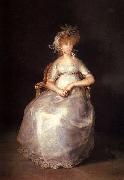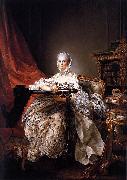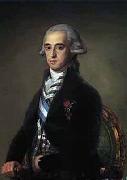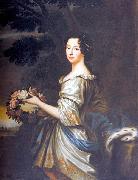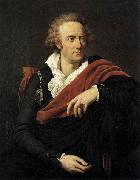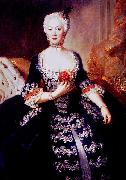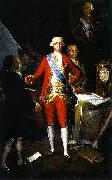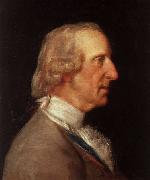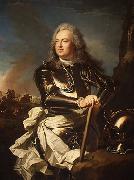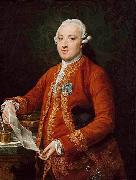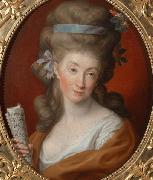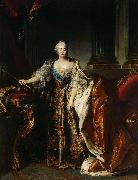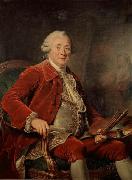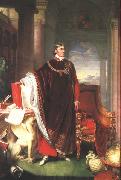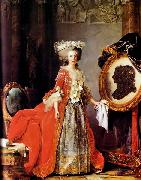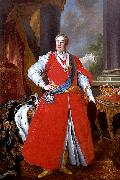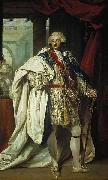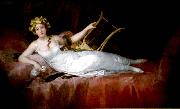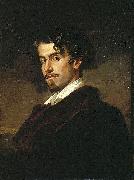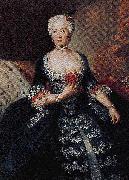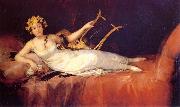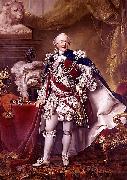Wholesale Oil Painting No Minimum |
|||||||||||
|
|
|||||||||||

|
|||||||||||
|
|
|
||||||||
Francisco de GoyaSpanish 1746-1828 Francisco de Goya Locations was an Aragonese Spanish painter and printmaker. Goya was a court painter to the Spanish Crown and a chronicler of history. He has been regarded both as the last of the Old Masters and as the first of the moderns. The subversive and subjective element in his art, as well as his bold handling of paint, provided a model for the work of later generations of artists, notably Manet and Picasso. Goya married Bayeu's sister Josefa in July 25, 1773. His marriage to Josefa (he nicknamed her "Pepa"), and Francisco Bayeu's membership of the Royal Academy of Fine Art (from the year 1765) helped him to procure work with the Royal Tapestry Workshop. There, over the course of five years, he designed some 42 patterns, many of which were used to decorate (and insulate) the bare stone walls of El Escorial and the Palacio Real de El Pardo, the newly built residences of the Spanish monarchs. This brought his artistic talents to the attention of the Spanish monarchs who later would give him access to the royal court. He also painted a canvas for the altar of the Church of San Francisco El Grande, which led to his appointment as a member of the Royal Academy of Fine Art. In 1783, the Count of Floridablanca, a favorite of King Carlos III, commissioned him to paint his portrait. He also became friends with Crown Prince Don Luis, and lived in his house. His circle of patrons grew to include the Duke and Duchess of Osuna, whom he painted, the King and other notable people of the kingdom. After the death of Charles III in 1788 and revolution in France in 1789, during the reign of Charles IV, Goya reached his peak of popularity with royalty. |
||||||||
|
|
||||||||
Portrait of
Portrait of Painting ID:: 77594 |
1800(1800)
Medium Oil on canvas
Dimensions 216 ?? 144 cm (85 ?? 56.7 in)
cyf 1800(1800) Medium Oil on canvas Dimensions 216 ?? 144 cm (85 ?? 56.7 in) cyf |
|||||||
|
|
||||||||
Francois-Hubert DrouaisParis 1727-Rome 1775 was a French painter and Jean-Germain Drouais's father. He specialized in portraits, some of which include Louis XV's last two mistresses, Madame de Pompadour and Madame du Barry respectively. He even painted the young Marie Antoinette. |
||||||||
|
|
||||||||
|
|
Portrait of
Portrait of Painting ID:: 77997 |
Date 1763-1764
Medium Oil on canvas
Dimensions 217 x 156.8 cm (85.4 x 61.7 in)
cyf Date 1763-1764 Medium Oil on canvas Dimensions 217 x 156.8 cm (85.4 x 61.7 in) cyf |
||||||
|
|
||||||||
Francisco de GoyaSpanish 1746-1828 Francisco de Goya Locations was an Aragonese Spanish painter and printmaker. Goya was a court painter to the Spanish Crown and a chronicler of history. He has been regarded both as the last of the Old Masters and as the first of the moderns. The subversive and subjective element in his art, as well as his bold handling of paint, provided a model for the work of later generations of artists, notably Manet and Picasso. Goya married Bayeu's sister Josefa in July 25, 1773. His marriage to Josefa (he nicknamed her "Pepa"), and Francisco Bayeu's membership of the Royal Academy of Fine Art (from the year 1765) helped him to procure work with the Royal Tapestry Workshop. There, over the course of five years, he designed some 42 patterns, many of which were used to decorate (and insulate) the bare stone walls of El Escorial and the Palacio Real de El Pardo, the newly built residences of the Spanish monarchs. This brought his artistic talents to the attention of the Spanish monarchs who later would give him access to the royal court. He also painted a canvas for the altar of the Church of San Francisco El Grande, which led to his appointment as a member of the Royal Academy of Fine Art. In 1783, the Count of Floridablanca, a favorite of King Carlos III, commissioned him to paint his portrait. He also became friends with Crown Prince Don Luis, and lived in his house. His circle of patrons grew to include the Duke and Duchess of Osuna, whom he painted, the King and other notable people of the kingdom. After the death of Charles III in 1788 and revolution in France in 1789, during the reign of Charles IV, Goya reached his peak of popularity with royalty. |
||||||||
|
|
||||||||
|
|
Portrait of
Portrait of Painting ID:: 78003 |
Date ca. 1795(1795)
Medium Oil on canvas
Dimensions 88.9 x 68.6 cm (35 x 27 in)
cyf Date ca. 1795(1795) Medium Oil on canvas Dimensions 88.9 x 68.6 cm (35 x 27 in) cyf |
||||||
|
|
||||||||
Ferdinand Richardt(10 April 1819 - 29 October 1895) Danish-American artist, in Denmark known for his lithographs of manor houses, and in the U.S. for his paintings of Niagara Falls and other landscapes. Ferdinand Richardt, the son of Johan Joachim Richardt and Johanne Frederikke ne Bohse, was born in Brede, north of Copenhagen in 1819. His father ran the inn/company store at the Brede factory. In 1832 the family relocated to nearby Ørholm to operate the inn at the paper-factory there. In 1839, they moved to Copenhagen. Ferdinand became briefly a carpenter's apprentice in 1835, but soon decided on a career in fine art, following the lead of his brother Carl. Beginning in 1836 Ferdinand studied at the Royal Danish Academy of Art under the architect and designer Gustav Friedrich Hetsch, the historical painter J. L. Lund and the classical sculptor Bertel Thorvaldsen. Richardt was awarded the Academy's small and large silver medals in 1839 and 1840, respectively. In 1847, he received a five year stipend from the crown, on the condition that he deliver one architectural and one landscape painting each year to the royal collection. Between 1855 and 1859 he visited in the United States. He maintained a studio in New York City, while traveling during the summers to Niagara Falls and to various destinations east of the Mississippi River. After returning to Denmark, Richardt married the widow Sophia Schneider ne Linnemann (1831-1888) in 1862. They traveled for part of a year in southern Europe, and from 1863 they lived for a period in England. In February 1864, Queen Victoria invited Richardt to display his art work to the court at Windsor Castle. In 1872 and 1873, Richardt sold many of his accumulated paintings and lithographs before emigrating to the United States with his family. They lived first in the town of Niagara Falls, N.Y. where the artist again produced canvases depicting the great waterfall and the surrounding area. In 1875, the Richardts moved to San Francisco, and finally in 1876 to Oakland. For the remaining twenty years of his life Richardt was active as a painter of California landscapes with a concentration on the San Francisco Bay Area. He exhibited and sold his works in San Francisco until at least 1887. At the same time he taught drawing privately. At his death in 1895, Richardt left a daughter, Johanna (1862-1897), and a stepson, Joost Schneider. |
||||||||
|
|
||||||||
|
|
Portrait of
Portrait of Painting ID:: 78137 |
Date 1684(1684)
Medium Oil
cyf Date 1684(1684) Medium Oil cyf |
||||||
|
|
||||||||
Antonio Fabres y Costa1855-1938 |
||||||||
|
|
||||||||
|
|
Portrait of
Portrait of Painting ID:: 78139 |
Date 1793(1793)
Medium Oil on canvas
Dimensions 93 x 73 cm (36.6 x 28.7 in)
cyf Date 1793(1793) Medium Oil on canvas Dimensions 93 x 73 cm (36.6 x 28.7 in) cyf |
||||||
|
|
||||||||
antoine pesneAntoine Pesne, född 23 maj 1683 i Paris, Frankrike, död 5 augusti 1757 i Berlin, Preussen, var en fransk målare under rokokon. Pesne gick i lära hos sin far, målaren Thomas Pesne, samt hos Charles de la Fosse i Paris. Under åren 1705?C1710 företog han en resa i Italien och vistades huvudsakligen i Venedig, där han anslöt sig till Andrea Celesti, vars måleri tydligt påverkade Pesnes tidiga verk. 1710 kallades han av kung Fredrik I av Preussen till Berlin som hovmålare. Därefter företog han under de följande åren kortare resor till hoven i Dessau (1715), Dresden (1718), London (1723) och Paris (1724). 1733 utnämndes Pesne till ledare för konstakademin i Berlin. Han anses vara en viktig förmedlare av den franska konsten till Brandenburg-Preussen. Pesne var i huvudsak verksam som porträttmålare, men han utförde även talrika vägg- och takmålningar för Fredrik den store i de kungliga slotten. Ett av Pesnes mest berömda konstverk är Dansösen Barbara Campanini (cirka 1745). Detta porträtt med sin lätta och schvungfulla formgivning, det spontana penseldraget och de ljusa, pastelliknande färgerna är karakteristiskt för Pesnes arbeten och för rokokon i allmänhet. På ett virtuost sätt framställer Pesne den med tygblommor dekorerade sidenklänningen. Fredrik den store uppskattade sin hovmålares berömda plein-air-porträtt och lät hänga det på en framträdande plats i sitt arbetsrum i slottet i Berlin. |
||||||||
|
|
||||||||
|
|
Portrait of
Portrait of Painting ID:: 78195 |
ca. 1739(1739)
Medium Oil on canvas
cyf ca. 1739(1739) Medium Oil on canvas cyf |
||||||
|
|
||||||||
Francisco de GoyaSpanish 1746-1828 Francisco de Goya Locations was an Aragonese Spanish painter and printmaker. Goya was a court painter to the Spanish Crown and a chronicler of history. He has been regarded both as the last of the Old Masters and as the first of the moderns. The subversive and subjective element in his art, as well as his bold handling of paint, provided a model for the work of later generations of artists, notably Manet and Picasso. Goya married Bayeu's sister Josefa in July 25, 1773. His marriage to Josefa (he nicknamed her "Pepa"), and Francisco Bayeu's membership of the Royal Academy of Fine Art (from the year 1765) helped him to procure work with the Royal Tapestry Workshop. There, over the course of five years, he designed some 42 patterns, many of which were used to decorate (and insulate) the bare stone walls of El Escorial and the Palacio Real de El Pardo, the newly built residences of the Spanish monarchs. This brought his artistic talents to the attention of the Spanish monarchs who later would give him access to the royal court. He also painted a canvas for the altar of the Church of San Francisco El Grande, which led to his appointment as a member of the Royal Academy of Fine Art. In 1783, the Count of Floridablanca, a favorite of King Carlos III, commissioned him to paint his portrait. He also became friends with Crown Prince Don Luis, and lived in his house. His circle of patrons grew to include the Duke and Duchess of Osuna, whom he painted, the King and other notable people of the kingdom. After the death of Charles III in 1788 and revolution in France in 1789, during the reign of Charles IV, Goya reached his peak of popularity with royalty. |
||||||||
|
|
||||||||
|
|
Portrait of
Portrait of Painting ID:: 78257 |
1783(1783)
Medium Oil on canvas
cyf 1783(1783) Medium Oil on canvas cyf |
||||||
|
|
||||||||
Francisco de GoyaSpanish 1746-1828 Francisco de Goya Locations was an Aragonese Spanish painter and printmaker. Goya was a court painter to the Spanish Crown and a chronicler of history. He has been regarded both as the last of the Old Masters and as the first of the moderns. The subversive and subjective element in his art, as well as his bold handling of paint, provided a model for the work of later generations of artists, notably Manet and Picasso. Goya married Bayeu's sister Josefa in July 25, 1773. His marriage to Josefa (he nicknamed her "Pepa"), and Francisco Bayeu's membership of the Royal Academy of Fine Art (from the year 1765) helped him to procure work with the Royal Tapestry Workshop. There, over the course of five years, he designed some 42 patterns, many of which were used to decorate (and insulate) the bare stone walls of El Escorial and the Palacio Real de El Pardo, the newly built residences of the Spanish monarchs. This brought his artistic talents to the attention of the Spanish monarchs who later would give him access to the royal court. He also painted a canvas for the altar of the Church of San Francisco El Grande, which led to his appointment as a member of the Royal Academy of Fine Art. In 1783, the Count of Floridablanca, a favorite of King Carlos III, commissioned him to paint his portrait. He also became friends with Crown Prince Don Luis, and lived in his house. His circle of patrons grew to include the Duke and Duchess of Osuna, whom he painted, the King and other notable people of the kingdom. After the death of Charles III in 1788 and revolution in France in 1789, during the reign of Charles IV, Goya reached his peak of popularity with royalty. |
||||||||
|
|
||||||||
|
|
Portrait of
Portrait of Painting ID:: 78261 |
1783(1783)
Medium Oil
cyf 1783(1783) Medium Oil cyf |
||||||
|
|
||||||||
Hyacinthe Rigaud1659-1743 French Hyacinthe Rigaud Gallery He was born Jacint Rigau i Ros [1] -- though in many encyclopaedias is "re-christened" with the name of H??acint Francesc Honrat Mathias Pere Martyr Andreu Joan Rigau -- in Perpignan, which became French (Treaty of the Pyrenees) a short time after his birth (November 7, 1659). In 1682, he was awarded the Prix de Rome. He was the most important portrait painter in the reign of King Louis XIV. His instinct for impressive poses and grand presentations precisely suited the tastes of the royal personages, ambassadors, clerics, courtiers, and financiers who sat for him. Because Rigaud's paintings captured very exact likenesses along with the subject's costumes and background details, his paintings are considered precise records of contemporary fashions. Rigaud was a master of the Baroque style of art. Rigaud's best-known work is his 1701 painting of Louis XIV which today hangs in the Louvre in Paris, as well as the second copy also requested by Louis XIV which is now at Versailles. In 1709 he was made a noble by his hometown of Perpignan. In 1727 he was made a knight of the Order of Saint Michael. Hyacinthe Rigaud died in Paris, France on December 27, 1743. |
||||||||
|
|
||||||||
|
|
Portrait of
Portrait of Painting ID:: 78294 |
ca. 1720(1720)
Medium Oil on canvas
cyf ca. 1720(1720) Medium Oil on canvas cyf |
||||||
|
|
||||||||
Pompeo BatoniItalian 1708-1787 Pompeo Batoni Location Italian painter and draughtsman. In his day he was the most celebrated painter in Rome and one of the most famous in Europe. For nearly half a century he recorded the visits to Rome of international travellers on the GRAND TOUR in portraits that remain among the most memorable artistic accomplishments of the period. He was equally gifted as a history painter, and his religious and mythological paintings were sought after by the greatest princes of Europe. |
||||||||
|
|
||||||||
|
|
Portrait of
Portrait of Painting ID:: 78448 |
1776(1776)
Medium Oil on canvas
Dimensions 98 x 75 cm (38.6 x 29.5 in)
cyf 1776(1776) Medium Oil on canvas Dimensions 98 x 75 cm (38.6 x 29.5 in) cyf |
||||||
|
|
||||||||
Pompeo BatoniItalian 1708-1787 Pompeo Batoni Location Italian painter and draughtsman. In his day he was the most celebrated painter in Rome and one of the most famous in Europe. For nearly half a century he recorded the visits to Rome of international travellers on the GRAND TOUR in portraits that remain among the most memorable artistic accomplishments of the period. He was equally gifted as a history painter, and his religious and mythological paintings were sought after by the greatest princes of Europe. |
||||||||
|
|
||||||||
|
|
Portrait of
Portrait of Painting ID:: 78476 |
1779(1779)
Medium Oil on canvas
cyf 1779(1779) Medium Oil on canvas cyf |
||||||
|
|
||||||||
Louis TocqueParis 1696-1772 |
||||||||
|
|
||||||||
|
|
Portrait of
Portrait of Painting ID:: 78495 |
1756(1756)
Medium Oil
cyf 1756(1756) Medium Oil cyf |
||||||
|
|
||||||||
Labille-Guiard, AdelaideFrench Neoclassical Painter, 1749-1803 French painter. Labille-Guiard was a painter of the French nobility before the Revolution and survived to paint the citizens of the Directory. Emerging from the 18th-century tradition of powdered wigs and shimmering satins, she captured informal moments in the lives of her subjects, frequently depicting them interrupted from some pastime |
||||||||
|
|
||||||||
|
|
Portrait of
Portrait of Painting ID:: 78534 |
1785(1785)
Medium Oil on canvas
cyf 1785(1785) Medium Oil on canvas cyf |
||||||
|
|
||||||||
Thomas Ender(3 November 1793 Vienna - 28 September 1875 Vienna) was an Austrian painter. He was twin brother of Johann Ender. He also studied at the Vienna Academy, becoming a noted landscape painter. He won the grand prize at the Vienna Academy in 1816. Going to Brazil in 1817, he brought back nearly a thousand drawings and water colors. He visited Italy, Palestine, Greece and Paris. In 1836, he became corrector and later professor at the Vienna Academy, filling that chair until 1849. |
||||||||
|
|
||||||||
|
|
Portrait of
Portrait of Painting ID:: 78579 |
1823(1823)
Medium Oil on canvas
Dimensions 220 x 318 cm (86.6 x 125.2 in)
cyf 1823(1823) Medium Oil on canvas Dimensions 220 x 318 cm (86.6 x 125.2 in) cyf |
||||||
|
|
||||||||
Labille-Guiard, AdelaideFrench Neoclassical Painter, 1749-1803 French painter. Labille-Guiard was a painter of the French nobility before the Revolution and survived to paint the citizens of the Directory. Emerging from the 18th-century tradition of powdered wigs and shimmering satins, she captured informal moments in the lives of her subjects, frequently depicting them interrupted from some pastime |
||||||||
|
|
||||||||
|
|
Portrait of
Portrait of Painting ID:: 78585 |
1787(1787)
Medium Oil on canvas
Dimensions 271 x 194 cm (106.7 x 76.4 in)
cyf 1787(1787) Medium Oil on canvas Dimensions 271 x 194 cm (106.7 x 76.4 in) cyf |
||||||
|
|
||||||||
Louis de Silvestre(23 June 1675 - 11 April 1760) was a French portrait and history painter. He was court painter to King Augustus II of Poland, and director of the Royal Academy of Arts in Dresden. Sylvestre was born in Sceaux, south of Paris, the third son of Israel Silvestre, the notable engraver and drawing-master to the Dauphin himself. Louis was taught initially by his father, then trained under Charles Le Brun and Bon Boullogne; he completed his studies in Rome, where he met Carlo Maratta, whose work had a great influence on him. After his return to Paris, Sylvester entered the Royal Academy in 1702 and was appointed professor in 1706. |
||||||||
|
|
||||||||
|
|
Portrait of
Portrait of Painting ID:: 78622 |
ca. 1737(1737)
Medium Oil on canvas
cyf ca. 1737(1737) Medium Oil on canvas cyf |
||||||
|
|
||||||||
Sir Joshua ReynoldsBritish 1723-1792 Sir Joshua Reynolds Locations Reynolds was born in Plympton, Devon, on 16 July 1723. As one of eleven children, and the son of the village school-master, Reynolds was restricted to a formal education provided by his father. He exhibited a natural curiosity and, as a boy, came under the influence of Zachariah Mudge, whose Platonistic philosophy stayed with him all his life. Showing an early interest in art, Reynolds was apprenticed in 1740 to the fashionable portrait painter Thomas Hudson, with whom he remained until 1743. From 1749 to 1752, he spent over two years in Italy, where he studied the Old Masters and acquired a taste for the "Grand Style". Unfortunately, whilst in Rome, Reynolds suffered a severe cold which left him partially deaf and, as a result, he began to carry a small ear trumpet with which he is often pictured. From 1753 until the end of his life he lived in London, his talents gaining recognition soon after his arrival in France. Reynolds worked long hours in his studio, rarely taking a holiday. He was both gregarious and keenly intellectual, with a great number of friends from London's intelligentsia, numbered amongst whom were Dr Samuel Johnson, Oliver Goldsmith, Edmund Burke, Giuseppe Baretti, Henry Thrale, David Garrick and fellow artist Angelica Kauffmann. Because of his popularity as a portrait painter, Reynolds enjoyed constant interaction with the wealthy and famous men and women of the day, and it was he who first brought together the famous figures of "The" Club. With his rival Thomas Gainsborough, Reynolds was the dominant English portraitist of 'the Age of Johnson'. It is said that in his long life he painted as many as three thousand portraits. In 1789 he lost the sight of his left eye, which finally forced him into retirement. In 1791 James Boswell dedicated his Life of Samuel Johnson to Reynolds. Reynolds died on 23 February 1792 in his house in Leicester Fields, London. He is buried in St. Paul's Cathedral. |
||||||||
|
|
||||||||
|
|
Portrait of
Portrait of Painting ID:: 78631 |
1788(1788)
Medium Oil
cyf 1788(1788) Medium Oil cyf |
||||||
|
|
||||||||
Francisco de GoyaSpanish 1746-1828 Francisco de Goya Locations was an Aragonese Spanish painter and printmaker. Goya was a court painter to the Spanish Crown and a chronicler of history. He has been regarded both as the last of the Old Masters and as the first of the moderns. The subversive and subjective element in his art, as well as his bold handling of paint, provided a model for the work of later generations of artists, notably Manet and Picasso. Goya married Bayeu's sister Josefa in July 25, 1773. His marriage to Josefa (he nicknamed her "Pepa"), and Francisco Bayeu's membership of the Royal Academy of Fine Art (from the year 1765) helped him to procure work with the Royal Tapestry Workshop. There, over the course of five years, he designed some 42 patterns, many of which were used to decorate (and insulate) the bare stone walls of El Escorial and the Palacio Real de El Pardo, the newly built residences of the Spanish monarchs. This brought his artistic talents to the attention of the Spanish monarchs who later would give him access to the royal court. He also painted a canvas for the altar of the Church of San Francisco El Grande, which led to his appointment as a member of the Royal Academy of Fine Art. In 1783, the Count of Floridablanca, a favorite of King Carlos III, commissioned him to paint his portrait. He also became friends with Crown Prince Don Luis, and lived in his house. His circle of patrons grew to include the Duke and Duchess of Osuna, whom he painted, the King and other notable people of the kingdom. After the death of Charles III in 1788 and revolution in France in 1789, during the reign of Charles IV, Goya reached his peak of popularity with royalty. |
||||||||
|
|
||||||||
|
|
Portrait of
Portrait of Painting ID:: 78669 |
Oil on canvas
Dimensions 124.7 x 207.9 cm (49.1 x 81.9 in)
cyf Oil on canvas Dimensions 124.7 x 207.9 cm (49.1 x 81.9 in) cyf |
||||||
|
|
||||||||
Valeriano Dominguez Becquer BastidaSpanish , 1834-1870 |
||||||||
|
|
||||||||
|
|
portrait of
portrait of Painting ID:: 78672 |
oil on canvas, 73 x 60cm
Date 1862(1862)
cyf oil on canvas, 73 x 60cm Date 1862(1862) cyf |
||||||
|
|
||||||||
PESNE, AntoineFrench painter (1683-1757) French painter active in Prussia. He studied with his father, the portrait painter Thomas Pesne (1653-1727), and with his maternal great-uncle, Charles de La Fosse. In 1703, as a pupil at the Academie Royale, he would have won the Prix de Rome with his Moses and the Daughters of Jethro (untraced), had not Jules Hardouin Mansart, adviser to the Academie, deemed all entries that year unworthy. Nevertheless Pesne left for Italy, making the acquaintance of Jean Raoux in Venice and being allowed the use of a studio in Rome by Charles Porson, Director of the Academie de France. While in Venice, Pesne painted the portrait of Friedrich Ernst von Knyphausen |
||||||||
|
|
||||||||
|
|
Portrait of
Portrait of Painting ID:: 78736 |
ca. 1739(1739)
Medium Oil on canvas
cyf ca. 1739(1739) Medium Oil on canvas cyf |
||||||
|
|
||||||||
Francisco de GoyaSpanish 1746-1828 Francisco de Goya Locations was an Aragonese Spanish painter and printmaker. Goya was a court painter to the Spanish Crown and a chronicler of history. He has been regarded both as the last of the Old Masters and as the first of the moderns. The subversive and subjective element in his art, as well as his bold handling of paint, provided a model for the work of later generations of artists, notably Manet and Picasso. Goya married Bayeu's sister Josefa in July 25, 1773. His marriage to Josefa (he nicknamed her "Pepa"), and Francisco Bayeu's membership of the Royal Academy of Fine Art (from the year 1765) helped him to procure work with the Royal Tapestry Workshop. There, over the course of five years, he designed some 42 patterns, many of which were used to decorate (and insulate) the bare stone walls of El Escorial and the Palacio Real de El Pardo, the newly built residences of the Spanish monarchs. This brought his artistic talents to the attention of the Spanish monarchs who later would give him access to the royal court. He also painted a canvas for the altar of the Church of San Francisco El Grande, which led to his appointment as a member of the Royal Academy of Fine Art. In 1783, the Count of Floridablanca, a favorite of King Carlos III, commissioned him to paint his portrait. He also became friends with Crown Prince Don Luis, and lived in his house. His circle of patrons grew to include the Duke and Duchess of Osuna, whom he painted, the King and other notable people of the kingdom. After the death of Charles III in 1788 and revolution in France in 1789, during the reign of Charles IV, Goya reached his peak of popularity with royalty. |
||||||||
|
|
||||||||
|
|
Portrait of
Portrait of Painting ID:: 78830 |
Oil on canvas
Dimensions 124.7 x 207.9 cm (49.1 x 81.9 in)
cyf Oil on canvas Dimensions 124.7 x 207.9 cm (49.1 x 81.9 in) cyf |
||||||
|
|
||||||||
Johann Georg Ziesenis(b Copenhagen, 1716; d Hannover, 4 March 1776). German painter of Danish birth. He trained with his father, Johann Georg Ziesenis (1681-1748); he became a German citizen in 1743 and subsequently was appointed court painter to Herzog Christian von Pfalz-Zweibrecken in Zweibrecken and, later, Mannheim. In the early 1750s he overcame his technical shortcomings by studying Flemish art, particularly the work of Rubens and van Dyck. He also introduced a new genre, the private court portrait. His portrait of Karl Philipp Theodor, Kurferst von der Pfalz (1757; Munich, Alte Pin.) is original in its intimate view of a nobleman posed at leisure in casual dress, seated in his private study. |
||||||||
|
|
||||||||
|
|
Portrait of
Portrait of Painting ID:: 82393 |
from 1762(1762) until 1766(1766)
Medium Oil on canvas
cyf from 1762(1762) until 1766(1766) Medium Oil on canvas cyf |
||||||
|
|
||||||||
|
Johann Georg Ziesenis (b Copenhagen, 1716; d Hannover, 4 March 1776). German painter of Danish birth. He trained with his father, Johann Georg Ziesenis (1681-1748); he became a German citizen in 1743 and subsequently was appointed court painter to Herzog Christian von Pfalz-Zweibrecken in Zweibrecken and, later, Mannheim. In the early 1750s he overcame his technical shortcomings by studying Flemish art, particularly the work of Rubens and van Dyck. He also introduced a new genre, the private court portrait. His portrait of Karl Philipp Theodor, Kurferst von der Pfalz (1757; Munich, Alte Pin.) is original in its intimate view of a nobleman posed at leisure in casual dress, seated in his private study. Portrait of from 1762(1762) until 1766(1766) Medium Oil on canvas cyf |
||||||||
|
|
||||||||
|
Prev Next
|
||||||||
|
|
||||||||
|
Related Paintings to Johann Georg Ziesenis :. |
||||||||
|
|
||||||||
|
CONTACT US |
